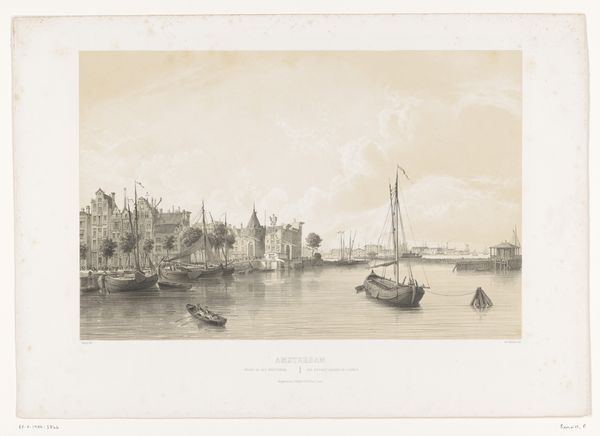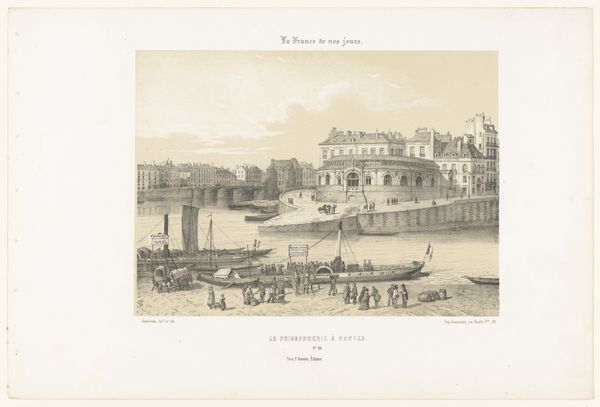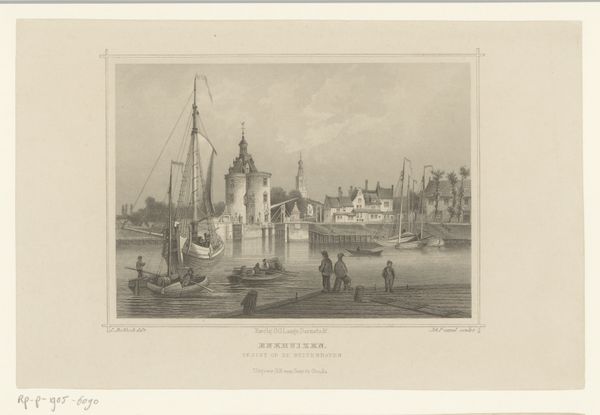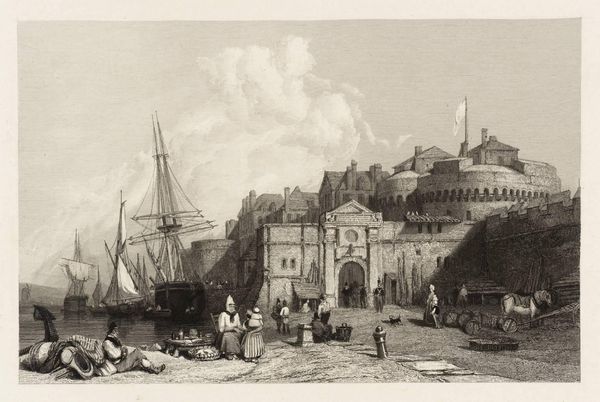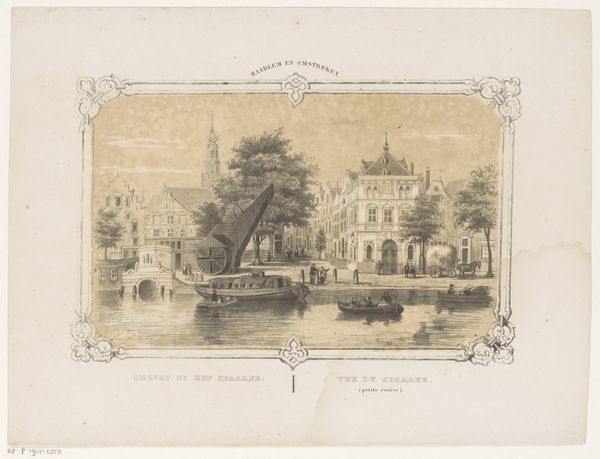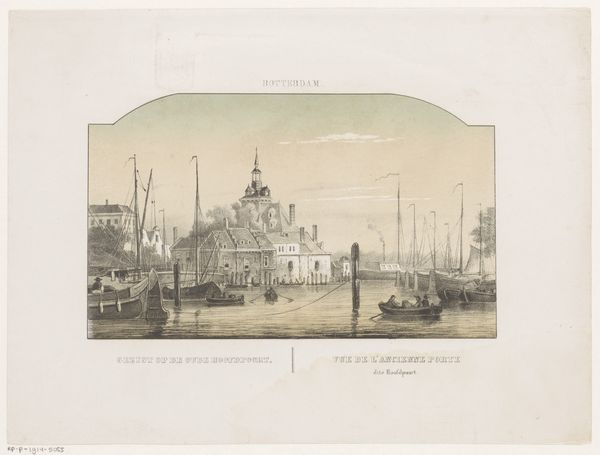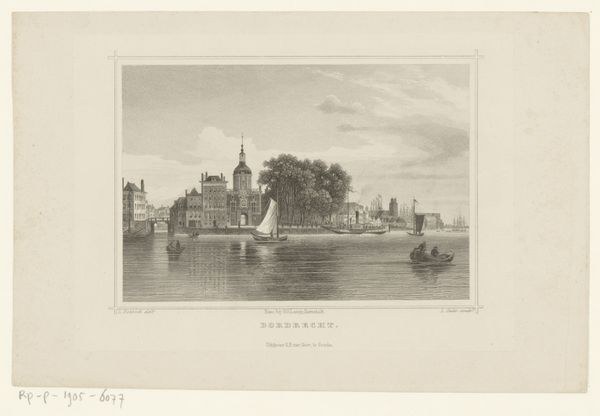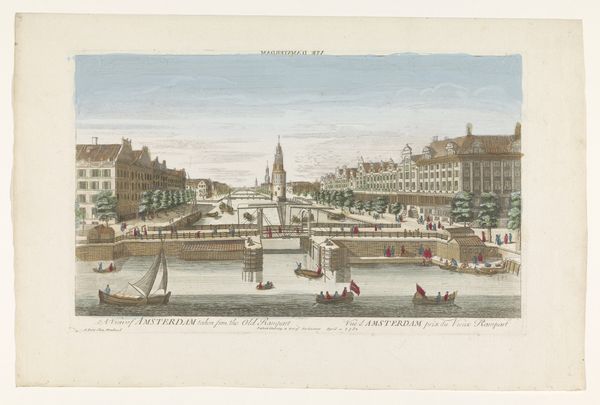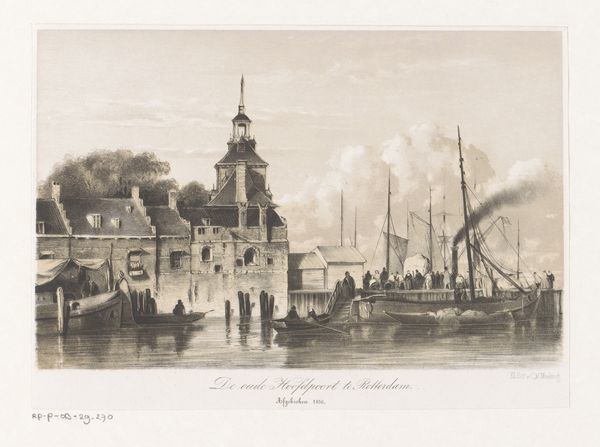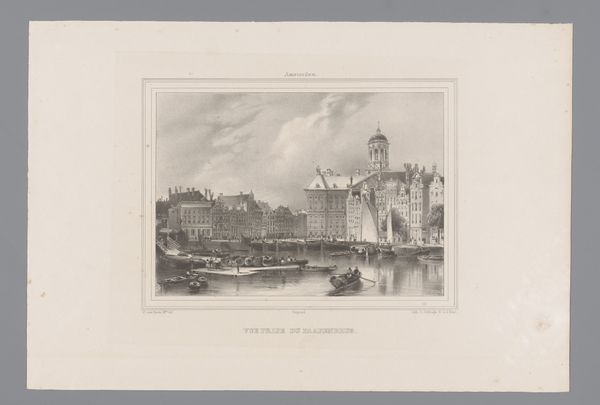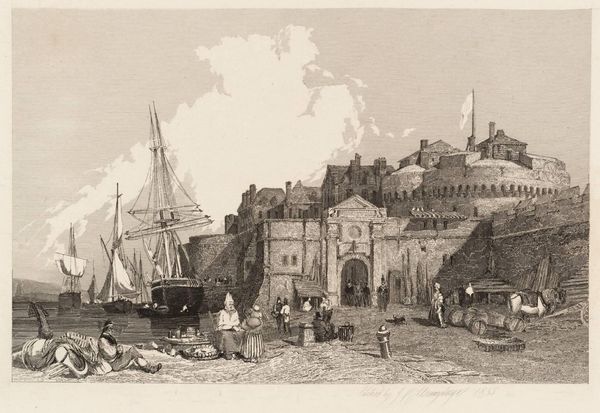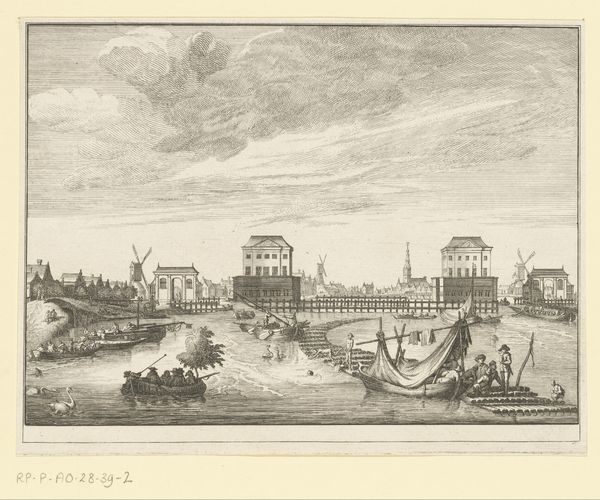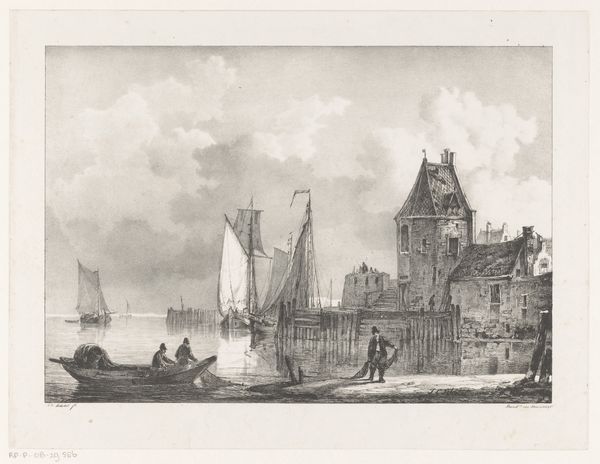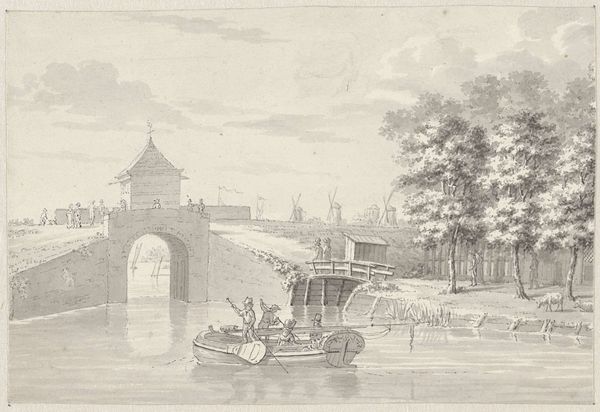
print, etching
#
dutch-golden-age
# print
#
etching
#
landscape
#
etching
#
cityscape
#
realism
Dimensions: height 177 mm, width 235 mm
Copyright: Rijks Museum: Open Domain
Editor: Here we have "View of the Fish Market in Vlaardingen," an etching from 1863. It gives a glimpse into 19th-century Dutch life. The tones are muted, almost monochromatic, and there's a real sense of everyday activity depicted. How do you interpret this work in the context of its time? Curator: It's crucial to consider how this etching reflects broader social structures. The fish market, as a site of commerce and labor, exposes the intersections of class and gender within the urban landscape. The very act of depicting the lives of ordinary people makes the invisible visible. Do you think it romanticizes the lives it represents, or does it show the labor? Editor: I initially thought it had a detached, observational quality, but the more I look, the more I notice the distinct figures - people buying and selling, individuals moving about. Perhaps there's an intentionality to highlighting these everyday lives. Curator: Exactly. Consider the power dynamics at play. Who is represented, and how? How might a feminist lens inform our reading of the women present? Are they simply part of the scenery, or active agents in the economy? Look closer at how gender roles play out, even within what seems like an unassuming, quotidian scene. Editor: So, by examining the individuals within the context of their societal roles, we can gain a deeper understanding of the social commentary embedded within the artwork? Curator: Precisely. This isn't just a pleasant cityscape; it’s a document reflecting the complex interplay of class, labor, and gender within 19th-century Dutch society. Paying close attention to those underrepresented groups invites dialogue about what that labor means and how those communities might be overlooked when building grand narratives. Editor: This makes me see how seemingly simple works can be so powerful in revealing hidden truths about the world they depict. Thank you. Curator: Absolutely, and that critical lens can inform our engagement with contemporary works, challenging us to consider whose stories are being told and whose are being erased.
Comments
No comments
Be the first to comment and join the conversation on the ultimate creative platform.
